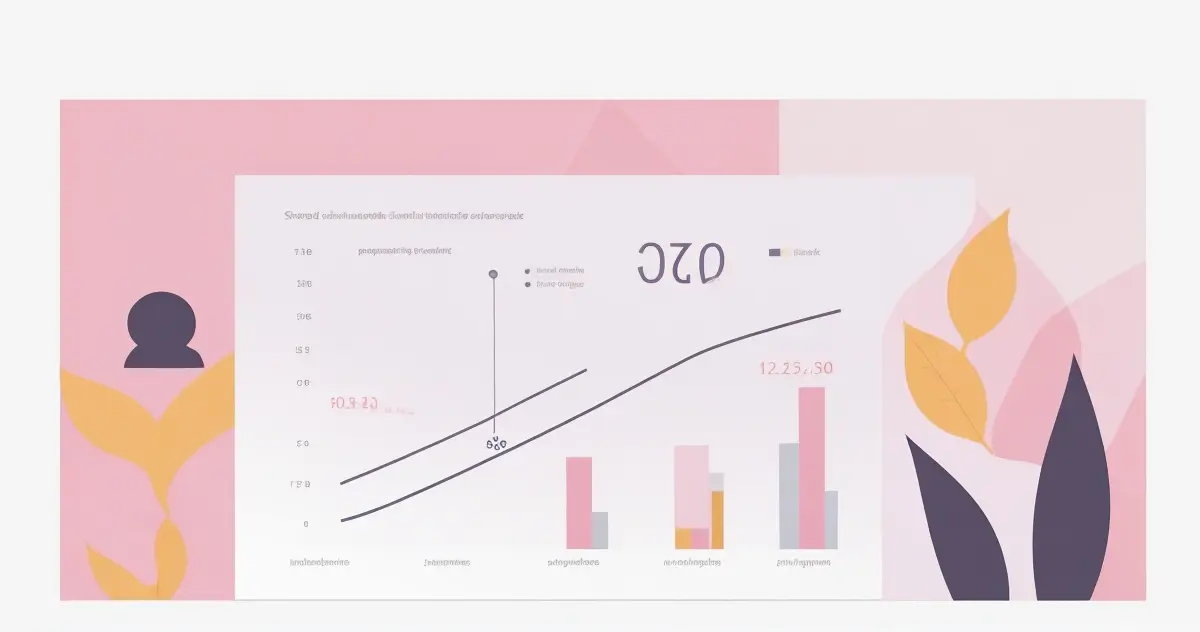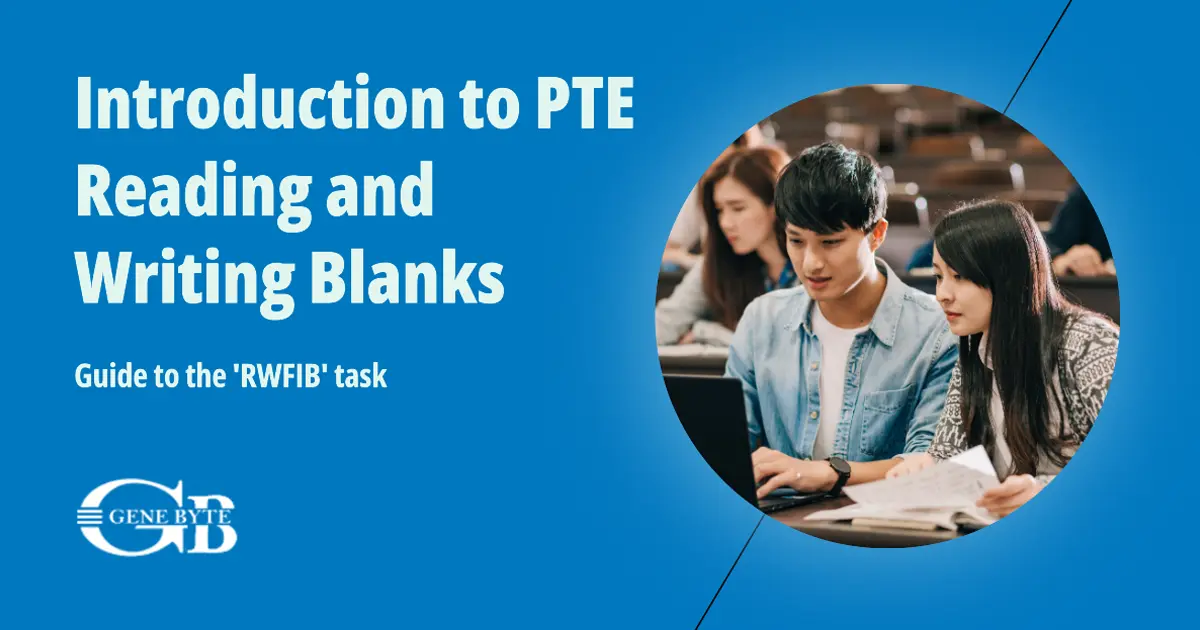Mastering the Reading and Writing: Fill in the Blanks task in PTE Academic isn't just about knowing words; it's about blending comprehension with precision in language application.
Imagine a PTE Reading Section question that tests language proficiency and sharpens critical thinking. The Reading and Writing: Fill in the Blanks task plays this crucial role. As educators in the competitive world of PTE preparation, understanding this task's intricacies is essential. It's not just about filling gaps; it's about strategically connecting language understanding and application.
Key Takeaways
- Task Requirements: Students fill gaps in a text using multiple response options, testing their vocabulary and context comprehension.
- Skills Assessed: Evaluates both reading comprehension and writing skills.
- Effective Strategies: Understanding the task helps educators develop effective teaching methods aligned with its requirements.
- Innovative Solutions: Genebyte's B2B SaaS solutions offer tools and strategies to enhance teaching methods for this task.
- Empower Educators: Equip teachers with resources to teach the task effectively, improve student performance, and elevate educational outcomes and the growth of coaching institutes.
By mastering the Reading and Writing: Fill in the Blanks task, educators can significantly boost their students' performance. Genebyte provides the tools and insights needed to excel in this specific segment and the entire PTE Academic exam.

Definition and Overview of Reading and Writing: Fill in the Blanks
Reading and Writing: Fill in the Blanks is a pivotal component of the PTE Academic exam, designed to assess a candidate's comprehensive language skills. In this task, participants encounter a text of up to 300 words on-screen, interspersed with several gaps. Each gap presents a drop-down list of options, from which candidates must select the word that best fits the context of the passage. Just like the Summarize Written Text, this task intertwines reading and writing abilities, requiring not only an understanding of the text's overall meaning but also a keen eye for detail in vocabulary and grammar.
Importance in PTE Academic
The significance of this task in PTE Academic lies in its dual focus. Firstly, it assesses the reading skill by challenging students to understand and interpret the context and tone of the text. This involves identifying the main ideas, themes, and the flow of the passage. Secondly, it evaluates the writing skill, particularly in the application of grammar, syntax, and word choice. The ability to discern the most appropriate word based on grammatical rules and contextual cues is crucial.
In the educational ecosystem, particularly for institutions like coaching centers, understanding the nuances of this task is fundamental. It not only helps in formulating effective teaching strategies but also in setting a clear pathway for students to excel in this section of the PTE Academic.
Genebyte's B2B SaaS solutions play a transformative role in this context. By integrating innovative technology and pedagogical expertise, Genebyte's offerings empower educators to deliver more targeted and effective PTE Academic preparation. Our tools and resources are designed to enhance the learning experience, making it more interactive, engaging, and results-oriented. This not only bolsters student performance but also significantly elevates the institute's reputation and success rates.

Task Structure and Format in PTE Academic
Description of the RWFIB Task-type
Reading and Writing: Fill in the Blanks is the first Reading task after Writing's Write Essay. It is a meticulously crafted task designed to evaluate both reading and writing skills concurrently. The task presents candidates with a text of approximately 300 words, peppered with multiple blanks. Each blank has a dropdown menu with various response options. Candidates must select the word that best completes the sentence, considering the context and overall meaning of the text. This task is a blend of comprehension and application, challenging students to demonstrate their vocabulary knowledge and grammatical precision.
Analysis of Prompt Length and Content
The prompt's length, capped at 300 words, is strategically set to provide a comprehensive context without overwhelming the candidate. The content of the text varies, encompassing a range of topics and tones, from formal to informal. This variety ensures that candidates are tested on their ability to adapt their language understanding to different contexts.
Structure of Reading and Writing: Fill in the Blanks
| Element | Description |
|---|---|
| Text Length | Up to 300 words |
| Number of Blanks | Multiple |
| Skills Assessed | Reading and Writing |
| Response Options | Dropdown menu for each blank |
| Context Variety | Formal and Informal |
Understanding the Skills Assessed
The task assesses two primary skills:
- Reading Skill: It gauges a candidate's ability to understand the text's theme, main ideas, and nuances, requiring a deep level of comprehension.
- Writing Skill: Focuses on the candidate's vocabulary range, understanding of grammar and syntax, and the ability to choose words that fit the context and tone of the text.
Real-Life Example
Consider a text discussing environmental policies. The blanks in the text will challenge the reader to fill in words that not only make sense grammatically but also align with the formal tone and specific content of the passage.

The Dual Role of RWFIBs in PTE Academic
Assessing Reading Skills
- Comprehension of Text:
- The task demands a thorough understanding of the passage's theme and main ideas.
- Candidates must discern the underlying meanings and nuances within the text, ensuring that their chosen words align with the overall context.
- Contextual Understanding:
- It requires an ability to interpret the tone and style of the passage, whether formal or informal.
- Understanding the purpose and target audience of the text plays a crucial role in selecting the most fitting words.
Assessing Writing Skills
- Vocabulary Application:
- The task tests a candidate's vocabulary range, challenging them to choose words that accurately fit the context.
- It is essential for students to demonstrate not just a wide vocabulary but also an understanding of word usage in different scenarios.
- Grammar and Syntax:
- Mastery over grammatical rules and sentence structure is essential.
- The task assesses the ability to select words that maintain the grammatical integrity of the text.
Real-Life Application
Consider a text discussing technological advancements. The blanks in this text will challenge students to choose words that not only fit grammatically but also resonate with the formal and technical nature of the topic.

Challenges and Considerations for Educators
Teaching Approaches for Reading and Writing Skills
- Customized Learning: Educators need to develop tailored teaching strategies that cater to varied student proficiency levels. This involves identifying individual learning styles and adapting teaching methods accordingly.
- Interactive Sessions: Incorporating interactive elements like quizzes and group discussions can enhance engagement and understanding of the task.
Addressing Common Student Challenges
- Vocabulary Expansion: Students often struggle with a limited vocabulary range. Educators must focus on expanding this through diverse reading materials and vocabulary exercises.
- Contextual Application: Many students find it challenging to apply words contextually. Teachers need to emphasize the importance of understanding the tone and style of the text for appropriate word selection.
Enhancing Critical Thinking and Language Proficiency
- Critical Analysis: Encourage students to analyze texts critically, focusing on main ideas, themes, and inference skills.
- Practice and Feedback: Regular practice sessions, followed by constructive feedback, are crucial in honing students' skills.
Genebyte's solutions not only address the specific needs of Reading and Writing: Fill in the Blanks but also contribute to the overall language proficiency of students, making it an indispensable tool for PTE Academic preparation.

Genebyte's Role in PTE Academic Preparation
How Genebyte's Solutions Address Task Challenges
- Contextual Learning Enhancement: Genebyte's platform leverages AI technology to provide contextual learning experiences. It helps students understand the nuances of language used in different scenarios, crucial for the Reading and Writing: Fill in the Blanks task.
- Vocabulary Building Tools: Our solutions include comprehensive vocabulary-building modules that aid in expanding students' word knowledge, a key aspect of this task.
Incorporating Technology in Teaching Methodologies
- Interactive Learning Interfaces: Genebyte's software incorporates interactive elements like real-time feedback and adaptive learning paths, making the learning process more engaging and effective.
- Data-Driven Insights: Our platform offers analytics and insights, enabling educators to tailor their teaching approach based on individual student performance.
Advantages for Educators and Coaching Institutes
- Efficiency in Preparation: By using Genebyte's solutions, educators can streamline their teaching process, focusing on key areas that need improvement.
- Enhanced Student Outcomes: With comprehensive preparation tools, students are better equipped to tackle the PTE Academic, leading to improved scores and success rates.
- Institutional Growth: As students achieve better results, the reputation of the coaching institute grows, attracting more potential students.

Impact on Student Performance
Measuring Improvement in Student Outcomes
- Performance Metrics: The improvement in students' performance in the Reading and Writing: Fill in the Blanks task can be quantified through various metrics, such as accuracy in filling blanks, enhanced vocabulary usage, and improved comprehension skills.
- Feedback and Assessment: Regular assessments and constructive feedback are vital in measuring and enhancing student performance.
Case Studies and Success Stories
- Case Study 1: A coaching institute utilizing Genebyte's solutions witnessed a significant improvement in students' scores, with a 40% increase in accuracy for the Reading and Writing: Fill in the Blanks task.
- Success Story: A student who struggled with contextual understanding and vocabulary showed remarkable progress after being trained with Genebyte's tools, leading to a high score in the PTE Academic exam.
Student Performance Improvement with Genebyte
| Metric | Before Genebyte | After Genebyte |
|---|---|---|
| Accuracy in Task | 60% | 85% |
| Vocabulary Range | Limited | Expanded |
| Comprehension Skills | Basic | Advanced |
Future Outlook in PTE Academic Preparation
- Adaptive Learning: Emphasizing the importance of adaptive learning techniques to cater to diverse student needs.
- Technology Integration: The role of advanced technology, like AI, in continually enhancing the preparation process.

Actionable Tips for Elevating PTE Academic Preparation
- Integrate Technology: Use Genebyte's B2B SaaS tools for interactive teaching.
- Focus on Individual Learning: Offer Genebyte's module-based features as per the students requirements.
- Regular Practice and Assessment: Utilize Genebyte's resources for consistent practice and improvement.
The Reading and Writing: Fill in the Blanks task measures a student's ability to understand and apply language in context. Mastering this is crucial for success, and Genebyte's B2B SaaS solutions offer an unparalleled advantage, blending technology with educational expertise. After this, students move to the Multiple-choice, Choose Multiple Answer task.
Get Started with Genebyte
For educators and institutes, adopting Genebyte's solutions ensures student success and institutional growth. These tools offer a comprehensive approach to PTE Academic preparation, enhancing teaching efficacy and student outcomes.
Enhance your PTE Academic preparation with Genebyte. Visit our website, schedule a demo, or contact us for more information. Transform your teaching methods today!
Frequently Asked Questions
In PTE Academic, RWFIB stands for 'Reading and Writing: Fill in the Blanks.' It's a task where text appears on-screen with several gaps, and students must drag words from a box to fill these gaps accurately.
Typically, a PTE Academic exam includes 5 - 6 RWFIB tasks. Each task presents a text, usually around 300 words, with multiple gaps for students to fill.
The total duration for RWFIB tasks in PTE Academic isn't fixed as such tasks do not have individual time limits. However, time management is crucial as the overall exam is timed.
Certainly. For example, a text might read: 'Yesterday, a young boy, driving a bike, rammed into a tree and ______ himself.' The options could be 'injured', 'helped', 'laughed', etc.
Scoring for RWFIB tasks is based on the ability to use contextual and grammatical cues. Each correctly completed blank earns one point. Partial credit scoring applies.
RWFIB tasks are marked on the basis of correct word selection based on context and grammar. Students must understand the overall meaning and tone of the text to choose the right words.
| Skill Type | Description |
|---|---|
| Contextual Understanding | Deciphering the tone and context of the text for correct word selection. |
| Vocabulary Range | Using a wide range of appropriate words. |
| Grammatical Accuracy | Selecting words that fit grammatically in the sentence structure. |
| Comprehension | Understanding the overall meaning of the text. |
Educators can enhance performance by focusing on vocabulary expansion, practicing with varied text styles, and using tools like Genebyte's B2B SaaS for interactive learning and assessments.
No, copy-pasting is not allowed in PTE RWFIB tasks. Students must select words from the given options to fill the blanks.
The best preparation involves practicing with diverse reading materials, focusing on grammar and vocabulary, and utilizing platforms like Genebyte for targeted learning.
Common mistakes include misinterpreting the context, limited vocabulary usage, and grammatical errors. Practice and understanding of varied text types can mitigate these issues.
